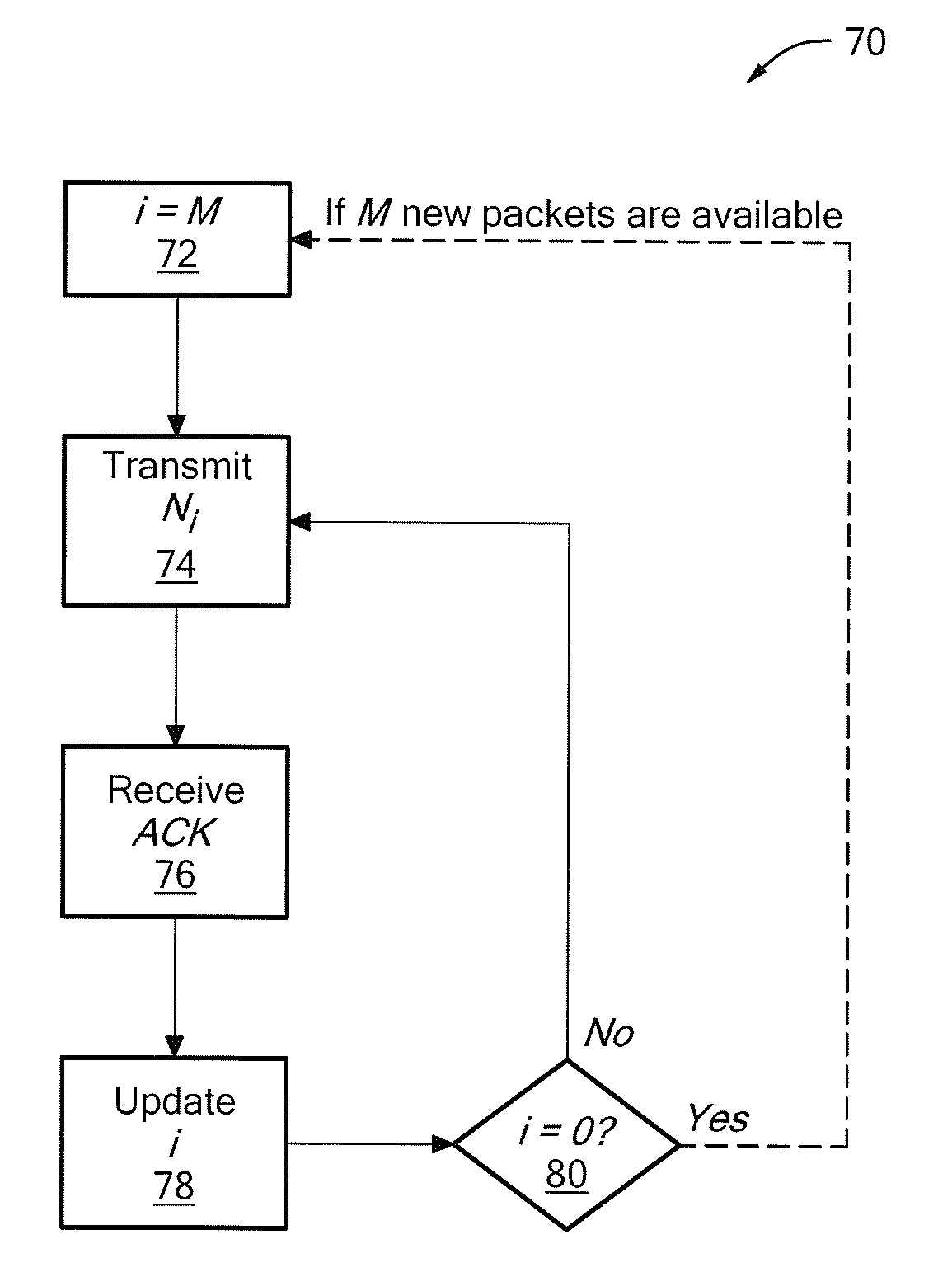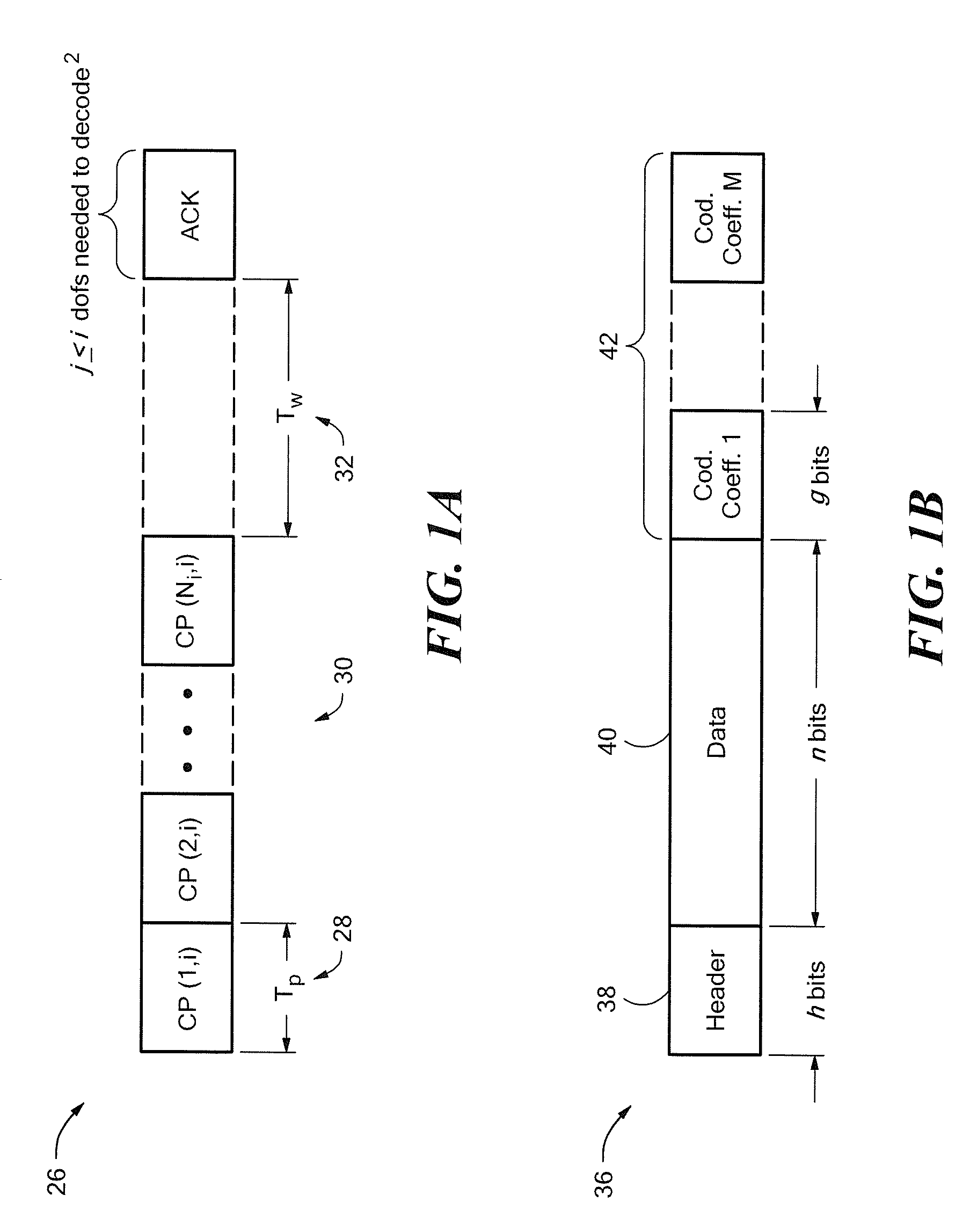Random Linear Network Coding for Time Division Duplexing
a random linear network and time division duplex technology, applied in the field of transmission information, can solve problems that have not been considered, and achieve the effects of maximizing throughput performance, and minimizing the expected transmission tim
- Summary
- Abstract
- Description
- Claims
- Application Information
AI Technical Summary
Benefits of technology
Problems solved by technology
Method used
Image
Examples
Embodiment Construction
[0034]Referring now to FIG. 1, a network 10 includes a plurality of stations or nodes 12a-12e generally denoted 12. Nodes 12 can be coupled as shown through channels or links 13a-13h generally denoted 13. As used herein the term “link” may refer to a physical or a wireless connection between two nodes. It should be noted that, although not illustrated in FIG. 1, it is possible for a separate link to exist between each of the nodes 12a-12e in the network. For example, a separate link may be provided from node 12a to each of nodes 12b-12e. Owing to cost considerations, physical construction limitations, technological limitations and other considerations, however, separate physical links are not always provided between each of the nodes 12a-12e.
[0035]In the exemplary network 10, nodes 12a and 12d are coupled via link 13a. In this exemplary embodiment, nodes 12a, 12d can only transmit or receive, but not both, at the same time. Thus, link 13a corresponds to a link in which time divisio...
PUM
 Login to View More
Login to View More Abstract
Description
Claims
Application Information
 Login to View More
Login to View More - R&D
- Intellectual Property
- Life Sciences
- Materials
- Tech Scout
- Unparalleled Data Quality
- Higher Quality Content
- 60% Fewer Hallucinations
Browse by: Latest US Patents, China's latest patents, Technical Efficacy Thesaurus, Application Domain, Technology Topic, Popular Technical Reports.
© 2025 PatSnap. All rights reserved.Legal|Privacy policy|Modern Slavery Act Transparency Statement|Sitemap|About US| Contact US: help@patsnap.com



